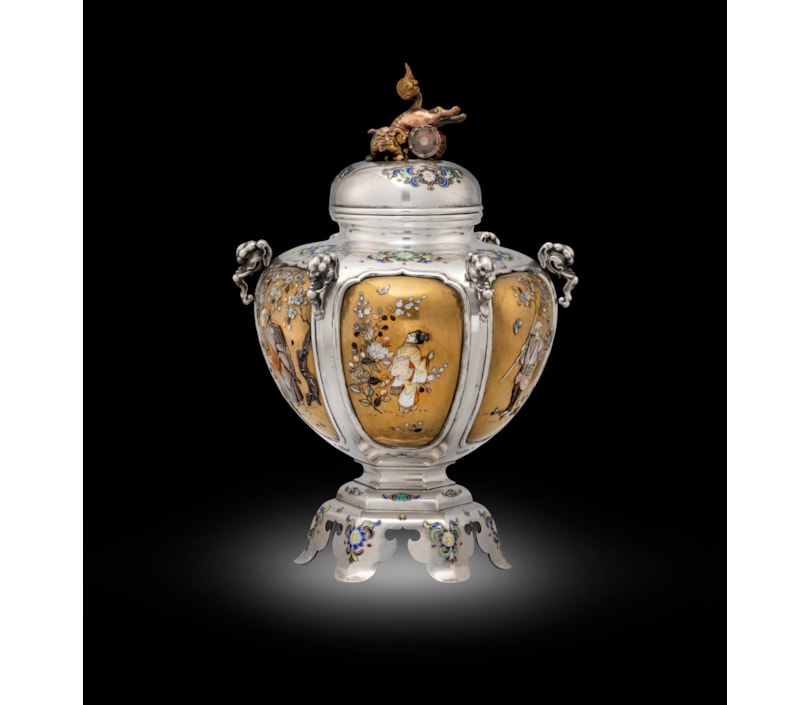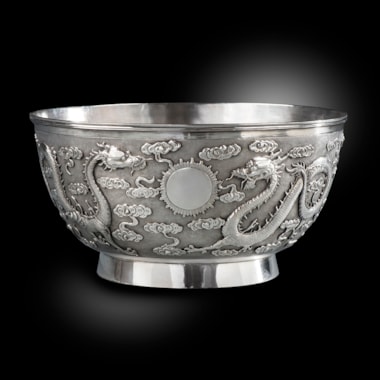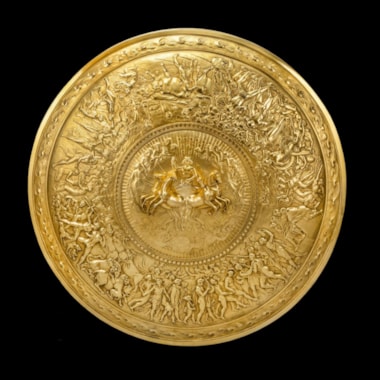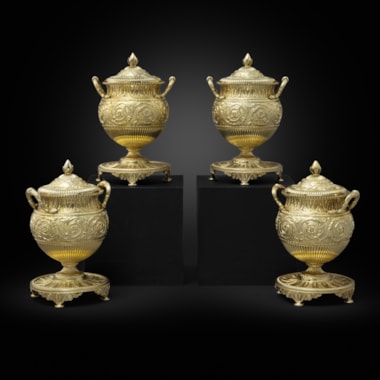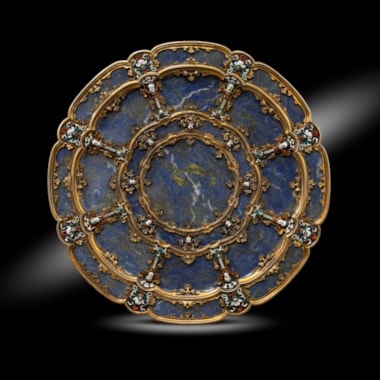An hexagonal shaped silver koro (incense burner) inset with six lobed gold-lacquer panels edged in silver, each depicting Japanese figures with seasonal flora executed in exquisite Shibayama style, raised on six shaped silver legs, with domed cover having a foo lion or shishi dog finial holding onto a coral bead barrel ball, the silver areas of the vessel are embellished with formal floral motifs in jewel colored enamels, signed to underside with three Japanese characters within a gold rectangle reserve.
A simple definition for "Shibayama" is "the inlay of a design into an ivory, wood or lacquer base using various carved natural materials of varying textures and colours, most often comprising numerous seashells, horn, stained ivory and wood".
Using shells for decorative inlay has been practised in Japan for hundreds of years, mainly by lacquer artists in producing beautiful objects for collectors.
However, during the 19th century, the Shibayama family, from whom this style drew its name, developed the technique into a highly detailed art which became highly fashionable during the Meiji period. The Meiji Emperor was a great appreciator of all Japanese Arts. He enjoyed foreign currencies flowing into the country from selling these works both within Japan and worldwide would greatly assist in his modernisation programme. Consequently, considerable Government effort was put into encouraging and supporting artistic development, exhibition and sale both within Japan and abroad as the Paris Exposition in 1867.
Early pieces by the original Shibayama family primarily comprised luxury versions of existing Japanese items such as inro, netsuke, small flower vases and boxes usually fashioned from ivory but also utilised gold lacquer. The technique involved carving the desired decoration - often floral - into the object's body. The selected materials would be consequently shaped, carved and then polished to fit precisely into the design, creating a slightly raised effect.
The materials used for the inlay list are seashells such as abalone, mother of pearl and coral, turtle shells, coconut shells, wood of different types, horn, stained ivory, silver and gold.
Listed in 1927 appraisal for Mrs. Belle G. Clark.
You May Also Like



































































